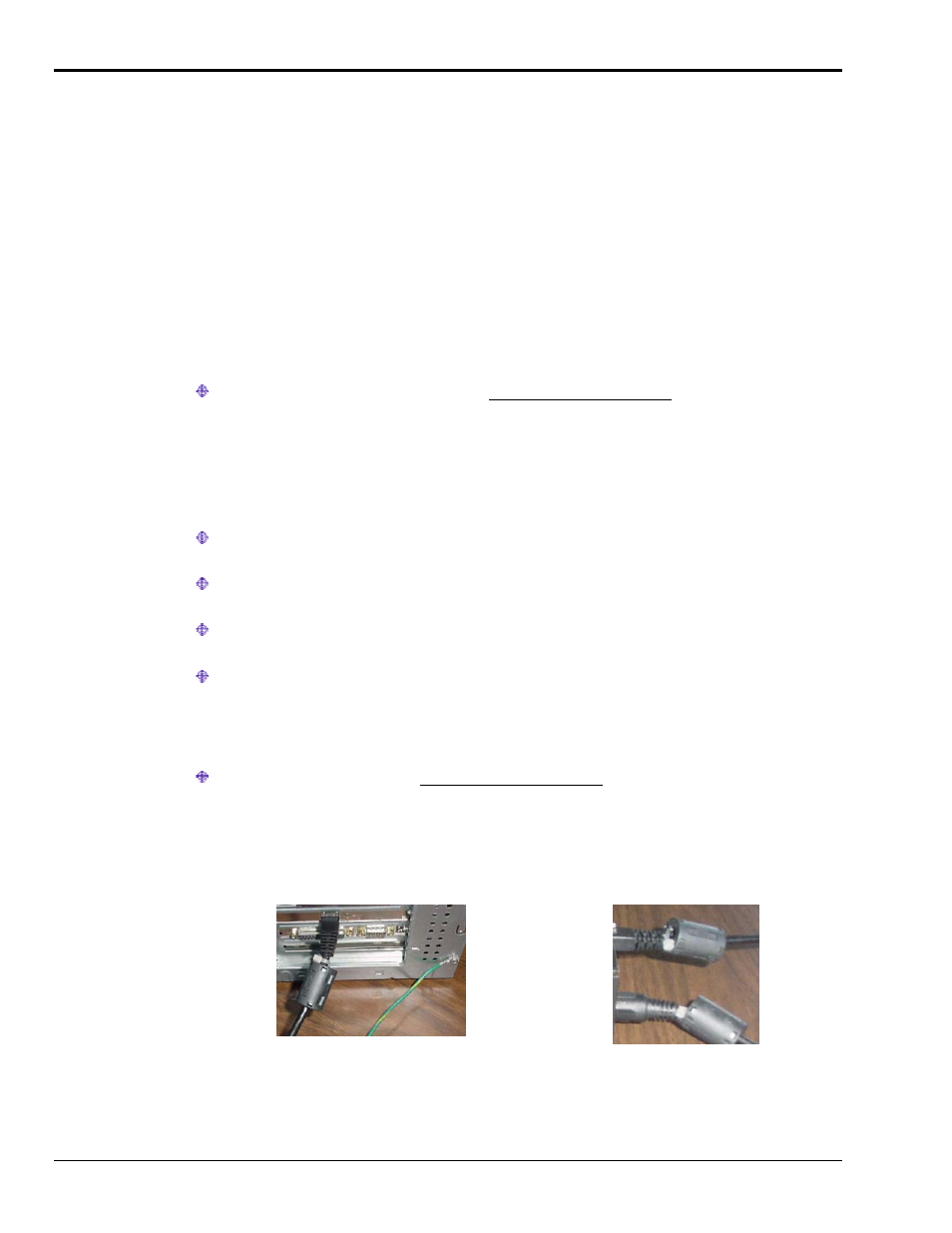Noise considerations – Measurement Computing StrainBook/616 User Manual
Page 104

Noise Considerations
Controlling electrical noise is imperative because it can present problems even with the best measurement
equipment. Most laboratory and industrial environments suffer from multiple sources of electrical noise.
For example, AC power lines, heavy equipment (particularly if turned on and off frequently), local radio
stations, and electronic equipment can create noise in a multitude of frequency ranges.
Local radio stations are a source of high frequency noise, while computers and other electronic equipment
can create noise in all frequency ranges. Creating a completely noise-free environment for test and
measurement is seldom practical. Fortunately, simple techniques such as using shielded/twisted pair wires,
filtering, and differential voltage measurement are available for controlling the noise in our measurements.
Some techniques prevent noise from entering the system; other techniques remove noise from the signal.
While many techniques for controlling noise in signals provide a means of removing the noise that is
already present, the preferred solution is to prevent the occurrence of noise in the signal in the first place.
The following practices, some of which are required for CE compliance, should be employed to minimize
noise.
Make a solid earth ground connection. Required for CE Compliance. Ensure that the chassis
of the primary data acquisition device, e.g., StrainBook/616 is connected to earth ground. This
practice: (a) keeps radiated emissions low by keeping the chassis electrically quiet, (b) keeps
potential common-mode voltages low, (c) improves user safety, and (d) provides a safe path for
Electrostatic Discharge energy back to earth ground. In regard to the StrainBook/616, chassis-
to-earth ground can be achieved via one of the DB9 connector lock screws or a lock screw on
a DB25 connector.
Use short Ethernet cables. The use of short Ethernet cables will reduce noise. The shorter the
cable the better.
Use shielded cables. Loose wires are effective antennae for radio frequency pickup and can form
loops for inductive pickup. The use of properly connected shields will greatly reduce such noise.
Minimize ambient EMI. The lower the ambient EMI, the better. Sources of electromagnetic
interference include solenoids, motors, computer equipment, high power distribution wiring, etc.
Distance cables. Power supply switch transients can vary in strength and frequency. Ethernet
cables can radiate digital switching noise. For these reasons route the power supply and Ethernet
cables such that they are as far as possible from analog lines. By analog lines we mean both the
analog channel input lines on the front panel and the analog expansion (WBK expansion) on the
rear panel of the device.
Use ferrite inductive collars. Required for CE Compliance. A clamp-on ferrite collar is to be
secured on both ends of the Ethernet cable and on the DIN5 end of the power supply cable [and/or
near the DC power source]. The collars on the Ethernet cable will reduce digital switching noise.
The ferrite inductive collars will not reduce the integrity of the Ethernet channel if the system is
making use of shielded Ethernet cables, Measurement Computing part number CA-242. A properly
placed ferrite collar(s) on the power cable will reduce power supply switch transients.
This partial view of the host PC shows the
Ethernet cable with a ferrite collar. The
PC’s connection to the ground-line is also
visible.
A view of two ferrite collars close to StrainBook’s
rear panel. The closest is clamped to the power
cable. The background collar is clamped to the
Ethernet cable.
9-4 CE-Compliance & Noise Considerations
968594
StrainBook/616 User’s Manual
